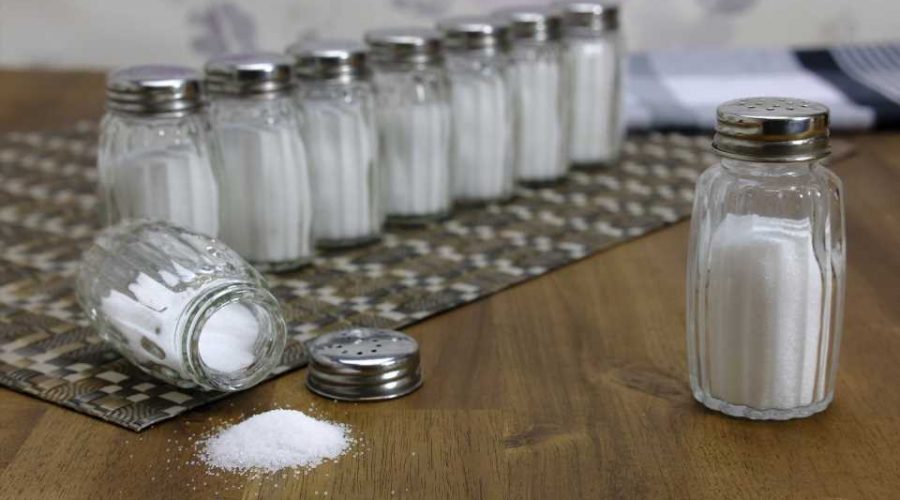Study explores what food sector needs to know about how to reduce sodium

Sodium is an essential micronutrient, but the amount we need is small. Three slices of bread or one teaspoon of table salt will do it, and chances are your daily sodium intake is far greater. More than 90% of Americans consume too much sodium, which can lead to hypertension, high blood pressure, and increased risk of heart disease and stroke.
Most of the excess sodium comes from processed and packaged foods, so the food industry and food scientists continuously look for ways to reduce sodium. A new paper from the University of Illinois provides a comprehensive review of scientific literature on sodium reduction strategies in food production.
“Sodium overconsumption is a huge health concern, and the FDA has recommended sodium reduction in food since the 1980s, but we haven’t succeeded yet. While the unit volume of salt in the food supply has not increased, the amount of sodium consumption has gone up, because we just consume a lot of food,” says Soo-Yeun Lee, professor in the Department of Food Science and Human Nutrition (FSHN) at U of I and co-author on the paper.
We only need around 450 milligrams (mg) of sodium per day, and the recommended maximum amount is 2,300 mg, or 1,500 mg for those at risk for hypertension. But average consumption exceeds 3,000 to 3,500 mg per day – or 50% to 100% above the upper limit. More than 70% of our sodium intake comes from processed and packaged foods, primarily cured meats, bread, cheese, and soups.
The researchers conducted a scoping review including primary studies, literature reviews, book chapters, and patents covering sodium reduction in food products. They focused on studies that included sensory data with human subjects, because palatability is essential for consumer acceptance.
“In this review, we looked at different food systems. The way you would reduce salt in a solid system, like a topical application on snack foods, such as salted peanuts or salted chips, would be very different from embedded application in semi-solid foods like cheese or bread. And in a liquid system like soup, where it is completely dissolved, it would be really different in the way we could reduce salt yet provide the palatability it gives,” Lee states.
“We’re hoping this work will provide insight into the wide variety of salt-reducing technologies that exist. This can help food companies be more informed to use different strategies than what they have been doing,” she adds.
The researchers identified five main strategies: Salt reduction, salt replacers, flavor modification, physical modification, and functional modification.
“The most obvious one is to remove salt from the recipe, and that is a key component in all of the strategies when sodium reduction is the goal,” says Aubrey Dunteman, graduate student in FSHN and lead author on the paper.
But it is not possible to completely eliminate sodium, because it has both sensory and functional properties. For example, it is used for meat preservation and to make bread dough rise.
“A lot of the studies we looked at combined more than one method, such as salt removal with salt replacers and flavor modification or salt removal and physical modification,” Dunteman says.
Many studies used salt replacers such as potassium chloride, calcium chloride, or other chloride or acid salts. However, these substitutes tend to have a bitter taste, so they are often used in combination with flavor modifications, such as umami substances or bitter blockers.
“Another method is physical modification. For example, you can encapsulate the salt crystals, which changes how the salt is dissolved in the mouth. This can alter the saltiness perception allowing for a reduction in the amount of sodium necessary to create the salty taste. You can also create an uneven distribution of the salt in a product that can further help enhance the perceived saltiness of the food product through taste contrast,” Dunteman explains.
“Finally, there is functional modification. For example, you could move away from a sodium-based preservative in cured meats, perhaps using a celery-powder preservative instead of sodium nitrate.”
Functional modification is less represented in the scoping review because this type of sodium reduction research typically does not incorporate a sensory component as a main assessment method, Dunteman notes.
If consumers want to reduce their salt intake, the best strategy is to cook your own food and limit your consumption of processed and packaged foods. You can also wean yourself off salt with practice, essentially go on a “salt diet.”
“If you’re cooking at home, you can intentionally reduce salt and you’ll appreciate the reduced saltiness perception as time goes on. People can adjust to the reduced salt level, but it’s a learning and adapting process. You can also add flavor enhancers such as herbs and spices,” Lee suggests.
“If you are a consumer of canned soup, for example, you can buy a low-sodium version and add salt. Then you can gradually modify the amount of salt you add, so you can make it palatable to your taste,” she notes.
Source: Read Full Article
